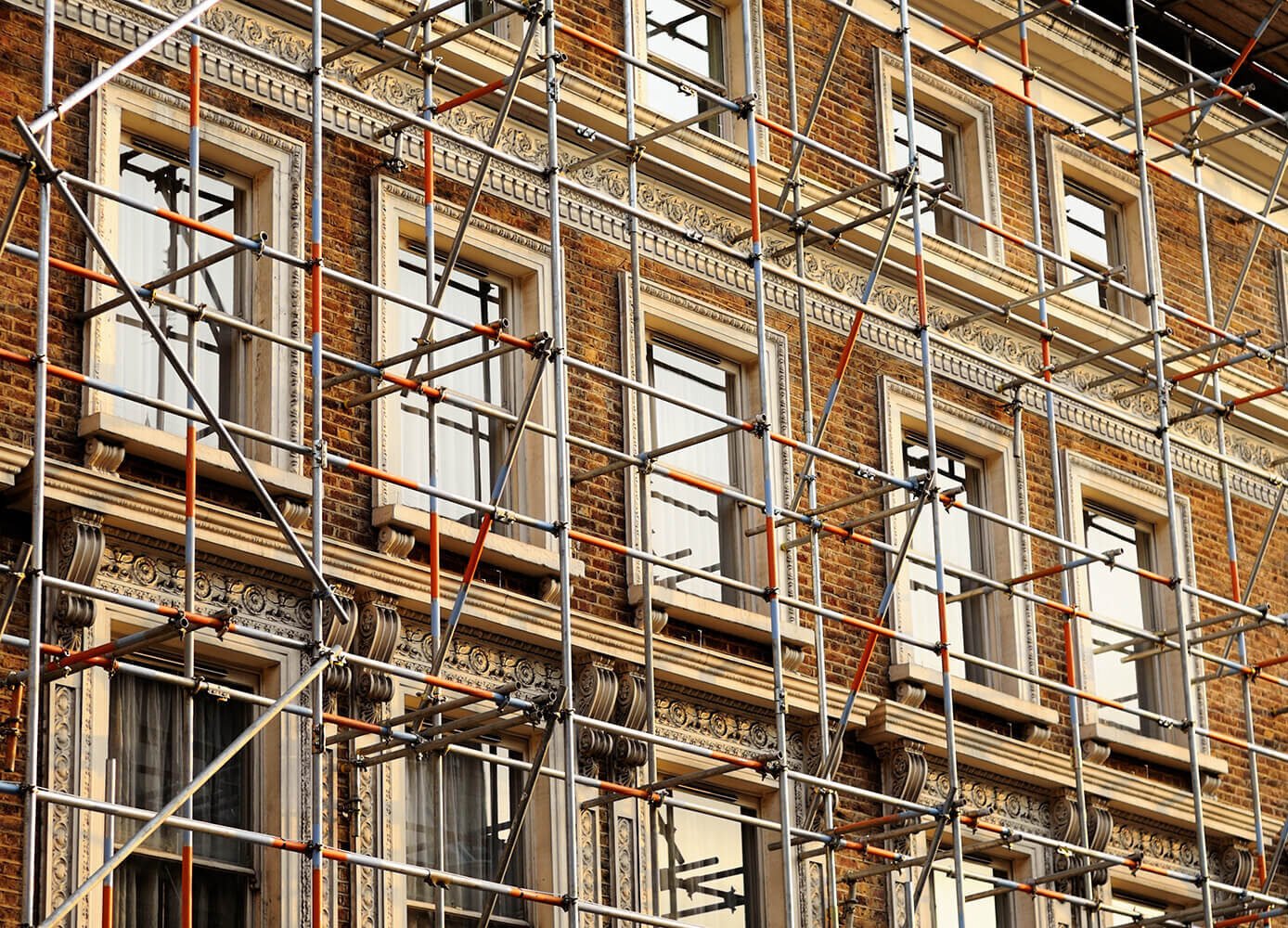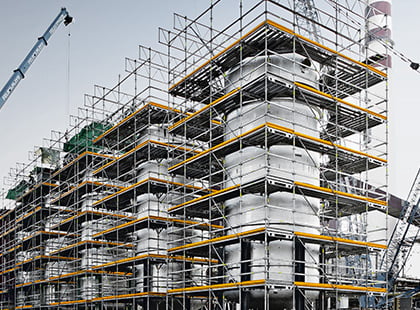Scaffolding Guildford: The Best Option for Your Building and Renovation Projects
Scaffolding Guildford: The Best Option for Your Building and Renovation Projects
Blog Article
Exploring the Different Sorts Of Scaffolding Made Use Of in Building And Construction Jobs
The construction industry counts greatly on various kinds of scaffolding to fulfill certain job requirements, each offering distinct advantages and applications. Conventional frame scaffolding supplies a tough structure for general jobs, while suspended scaffolding is necessary for work with skyscraper frameworks. Other options, such as system and rolling scaffolding, satisfy performance and wheelchair, respectively. The cantilever variant confirms invaluable in city environments where room is constricted. Understanding the subtleties of these scaffolding types is crucial for maximizing safety and efficiency on building sites, prompting a better evaluation of their special characteristics and applications.

Traditional Frame Scaffolding
Typical structure scaffolding is one of one of the most widely made use of methods in the construction industry because of its effectiveness and flexibility. This system is composed of straight and upright structures that are set up to create a stable system for materials and workers. The primary components include upright messages, horizontal journals, and diagonal braces, which with each other give a solid framework that can sustain significant tons.
One of the essential advantages of typical structure scaffolding is its adaptability to numerous construction tasks, varying from domestic structures to big business frameworks. The modular design enables very easy setting up and disassembly, making it effective for both lasting and temporary projects. Additionally, the system can be customized in height and width, fitting various structure designs and website conditions.
Security is critical in scaffolding applications, and typical framework systems are geared up with guardrails and toe boards to stop drops and make certain employee defense. In addition, normal examinations and adherence to safety and security policies are important in preserving the honesty of the scaffold. Generally, traditional frame scaffolding continues to be a basic selection in the construction industry, providing a reliable system for labor and improving overall project performance

Suspended Scaffolding
Put on hold scaffolding provides a special solution for building projects that require access to raised surfaces, particularly in situations where traditional frame scaffolding may be impractical. This type of scaffolding is generally put on hold from the roofing system or top degrees of a structure, making use of a system of systems, ropes, and wheels to create a functioning area that can be adapted to numerous elevations.
Among the primary benefits of suspended scaffolding is its adaptability. It can be quickly repositioned or lowered to accommodate adjustments in construction needs, making it ideal for tasks such as window installment, façade work, and maintenance on high-rise structures. Furthermore, the minimal footprint of put on hold scaffolding enables better use of ground area in urban atmospheres, where room is typically restricted.
Security is a vital factor to consider in the usage of put on hold scaffolding. In general, put on hold scaffolding provides a efficient and reliable remedy for accessing hard-to-reach Get More Info areas in different building and construction scenarios, enhancing both productivity and safety and security on website.
System Scaffolding
System scaffolding, commonly considered as a modern service in the scaffolding industry, contains pre-engineered parts that can be rapidly constructed and adjusted for various building and construction projects. Scaffolding. This kind of scaffolding is characterized by its modular layout, which allows for flexibility and efficiency on job Clicking Here sites, suiting architectural demands and different elevations
Generally made from high-strength steel or aluminum, system scaffolding offers boosted sturdiness and security. The elements include upright posts, horizontal journals, and diagonal dental braces, which adjoin securely, making certain a robust structure. The layout commonly integrates standard fittings, simplifying setting up and disassembly procedures, thus lowering labor time and costs.

Rolling Scaffolding
Moving scaffolding is a functional option to conventional fixed scaffolding, designed for flexibility and simplicity of use on building sites. This sort of scaffolding includes a system supported by frames with wheels, permitting workers to conveniently relocate it as required. The movement attribute dramatically enhances efficiency, as it minimizes downtime related to dismantling and assembling dealt with scaffolding.
Commonly built from light-weight products such as aluminum or steel, rolling scaffolding supplies a durable yet mobile service for projects needing frequent repositioning - Scaffolding. It is especially useful in jobs such as painting, drywall setup, and electric job, where access to numerous heights and locations is needed
Safety and security is extremely important in rolling scaffolding style, with attributes such as securing wheels to avoid unplanned activity when in operation, and guardrails to safeguard employees from drops. Furthermore, several models are adjustable in height, suiting numerous project needs.
Cantilever Scaffolding

The style of cantilever scaffolding commonly involves utilizing brackets or arms secured to a building or framework, allowing the system to extend outward securely. Security is paramount; therefore, these scaffolds must be engineered to withstand different tons and ecological conditions. Routine evaluation and maintenance are necessary to guarantee architectural integrity and employee safety and security.
Cantilever scaffolding is favored for its wikipedia reference convenience and efficient use of room, making it a prominent selection in city environments where room restrictions are usual. It helps with easier access to high elevations, inevitably contributing to the overall effectiveness of construction projects. Just like all scaffolding types, proper training and adherence to security criteria are critical for workers utilizing cantilever scaffolding.
Conclusion
Typical framework scaffolding supplies security, while suspended scaffolding offers convenience for elevated tasks. System scaffolding facilitates fast assembly, and rolling scaffolding enhances flexibility for differing work settings.
Standard framework scaffolding gives a tough structure for general tasks, while put on hold scaffolding is essential for work on high-rise structures.Rolling scaffolding is a functional option to conventional fixed scaffolding, made for wheelchair and ease of usage on construction websites. As with all scaffolding types, appropriate training and adherence to safety standards are vital for workers using cantilever scaffolding.
Traditional framework scaffolding provides security, while suspended scaffolding uses versatility for elevated jobs. System scaffolding promotes quick setting up, and rolling scaffolding enhances flexibility for differing work atmospheres.
Report this page